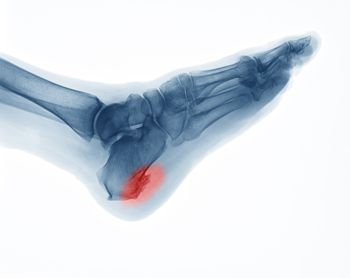Connect With Us
Blogs
Blog
What Causes Heel Spurs?
Heel spurs are tiny calcium deposits attached to the heel bone. Heel spurs are fairly common, and most people who have them do not experience any symptoms. In some cases, however, the heel spur can grow and begin to poke the tissues in the heel. This may result in a stabbing pain in the heel, especially while walking. Heel spurs are strongly associated with plantar fasciitis and arch injuries. Other factors that may increase your risk of developing heel spurs include being over the age of 40, having an uneven gait, being overweight, wearing shoes that don’t fit properly, standing for long periods of time, and having flat feet or high arches. For more information about heel spurs, please consult with a podiatrist.
Heel spurs can be incredibly painful and sometimes may make you unable to participate in physical activities. To get medical care for your heel spurs, contact Dr. Michael D. Garvin from Florida. Our doctor will do everything possible to treat your condition.
Heels Spurs
Heel spurs are formed by calcium deposits on the back of the foot where the heel is. This can also be caused by small fragments of bone breaking off one section of the foot, attaching onto the back of the foot. Heel spurs can also be bone growth on the back of the foot and may grow in the direction of the arch of the foot.
Older individuals usually suffer from heel spurs and pain sometimes intensifies with age. One of the main condition's spurs are related to is plantar fasciitis.
Pain
The pain associated with spurs is often because of weight placed on the feet. When someone is walking, their entire weight is concentrated on the feet. Bone spurs then have the tendency to affect other bones and tissues around the foot. As the pain continues, the feet will become tender and sensitive over time.
Treatments
There are many ways to treat heel spurs. If one is suffering from heel spurs in conjunction with pain, there are several methods for healing. Medication, surgery, and herbal care are some options.
If you have any questions feel free to contact our offices located in Port St. Lucie, FL . We offer the latest in diagnostic and treatment technology to meet your needs.
Read more about Heel SpursIs My Foot Sprained or Broken?
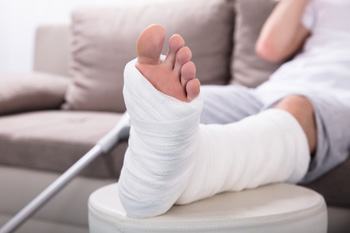 Sometimes it can be difficult to tell the difference between a sprain and a foot fracture. Both injuries have very similar symptoms, including pain, swelling, and bruising. A fracture will often be so painful that you may not be able to walk. Sprains can also make walking difficult, depending on the severity of the injury. At the time that you injure your foot, you may hear a noise. A popping sound can indicate a sprain, while a cracking sound can indicate a fracture. Treatments for the two conditions are different, so it is important to get a proper diagnosis. If you have injured your foot, it is suggested that you see a podiatrist as soon as possible.
Sometimes it can be difficult to tell the difference between a sprain and a foot fracture. Both injuries have very similar symptoms, including pain, swelling, and bruising. A fracture will often be so painful that you may not be able to walk. Sprains can also make walking difficult, depending on the severity of the injury. At the time that you injure your foot, you may hear a noise. A popping sound can indicate a sprain, while a cracking sound can indicate a fracture. Treatments for the two conditions are different, so it is important to get a proper diagnosis. If you have injured your foot, it is suggested that you see a podiatrist as soon as possible.
A broken foot requires immediate medical attention and treatment. If you need your feet checked, contact Dr. Michael D. Garvin from Florida. Our doctor can provide the care you need to keep you pain-free and on your feet.
Broken Foot Causes, Symptoms, and Treatment
A broken foot is caused by one of the bones in the foot typically breaking when bended, crushed, or stretched beyond its natural capabilities. Usually the location of the fracture indicates how the break occurred, whether it was through an object, fall, or any other type of injury.
Common Symptoms of Broken Feet:
- Bruising
- Pain
- Redness
- Swelling
- Blue in color
- Numbness
- Cold
- Misshapen
- Cuts
- Deformities
Those that suspect they have a broken foot shoot seek urgent medical attention where a medical professional could diagnose the severity.
Treatment for broken bones varies depending on the cause, severity and location. Some will require the use of splints, casts or crutches while others could even involve surgery to repair the broken bones. Personal care includes the use of ice and keeping the foot stabilized and elevated.
If you have any questions please feel free to contact our offices located in Port St. Lucie, FL . We offer the newest diagnostic and treatment technologies for all your foot and ankle needs.
Read more about Causes, Symptoms, and Treatment for a Broken FootHow Is Sesamoiditis Treated?
Sesamoiditis causes pain in the ball of the foot due to pressure on the sesamoid bones beneath the big toe. This condition is an overuse injury and is common among athletes who participate in activities which put pressure on the ball of the foot such as running, ballet, and basketball. Sesamoiditis is diagnosed through a physical examination. The doctor may also take X-rays of your foot in order to rule out a fracture. When sesamoiditis is diagnosed, treatment is typically conservative. You may be required to rest the affected foot and modify your daily activities and footwear to reduce pressure on the sesamoids. Your doctor may also suggest wearing orthotic inserts in your shoes in order to cushion the foot. If you suspect that you have sesamoiditis, it is recommended that you see a podiatrist for treatment.
Sesamoiditis is an unpleasant foot condition characterized by pain in the balls of the feet. If you think you’re struggling with sesamoiditis, contact Dr. Michael D. Garvin of Florida. Our doctor will treat your condition thoroughly and effectively.
Sesamoiditis
Sesamoiditis is a condition of the foot that affects the ball of the foot. It is more common in younger people than it is in older people. It can also occur with people who have begun a new exercise program, since their bodies are adjusting to the new physical regimen. Pain may also be caused by the inflammation of tendons surrounding the bones. It is important to seek treatment in its early stages because if you ignore the pain, this condition can lead to more serious problems such as severe irritation and bone fractures.
Causes of Sesamoiditis
- Sudden increase in activity
- Increase in physically strenuous movement without a proper warm up or build up
- Foot structure: those who have smaller, bonier feet or those with a high arch may be more susceptible
Treatment for sesamoiditis is non-invasive and simple. Doctors may recommend a strict rest period where the patient forgoes most physical activity. This will help give the patient time to heal their feet through limited activity. For serious cases, it is best to speak with your doctor to determine a treatment option that will help your specific needs.
If you have any questions please feel free to contact our offices located in Port St. Lucie, FL . We offer the newest diagnostic and treatment technologies for all your foot and ankle needs.
Read more about SesamoiditisStrengthening the Feet for Running a Marathon
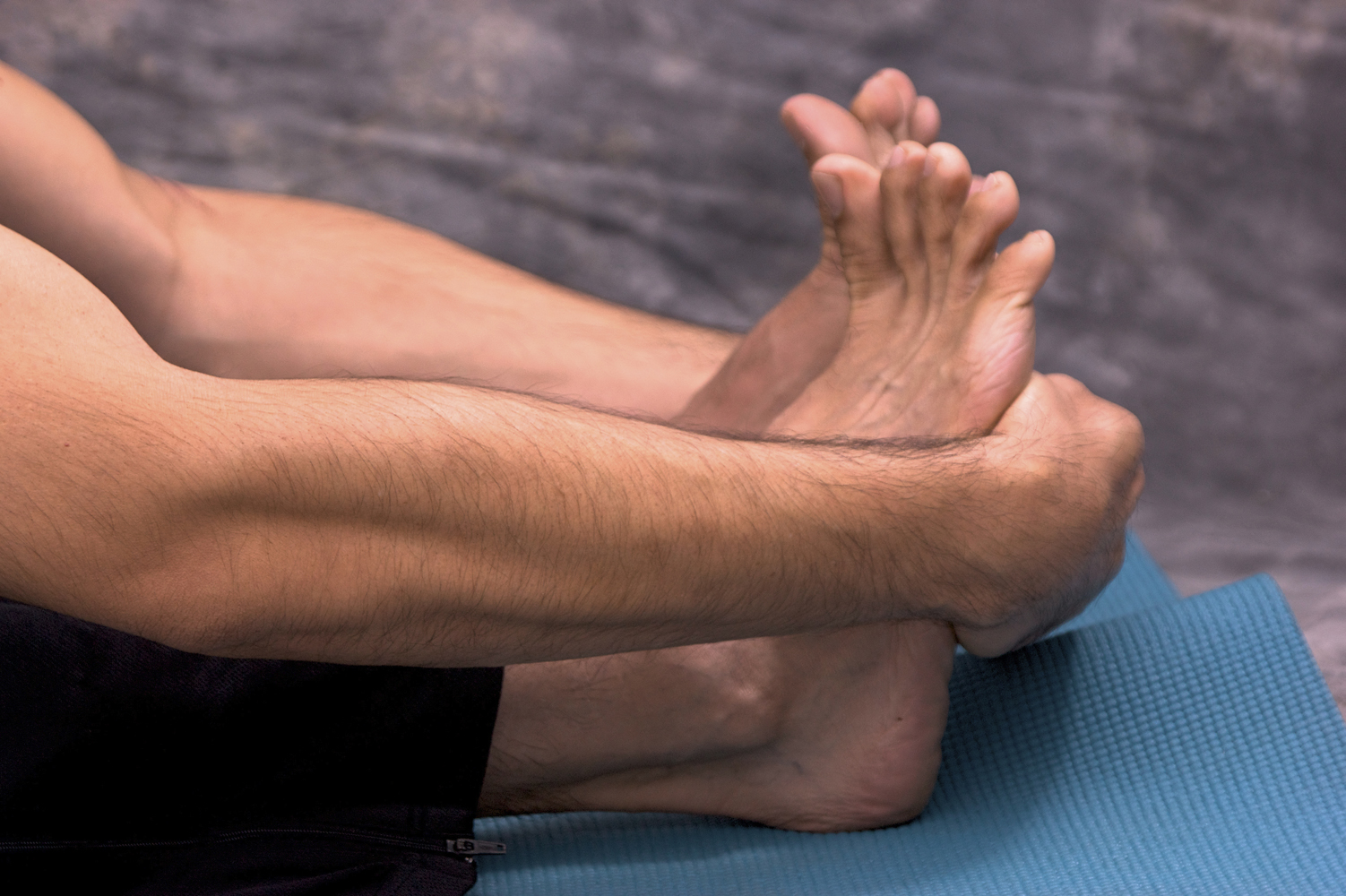 Many people who enjoy running have a goal of running in a marathon. Because the feet pound the ground consistently for twenty-six miles on the day of the marathon, in addition to several weeks of training that occurs prior to the marathon, it is important to wear running shoes that fit correctly. It is also important to frequently perform stretching exercises that can benefit the feet. The big toe maintains balance when toe stretches are practiced, and this is helpful in propelling the body forward as you run. Towel scrunches are an effective way to stretch the toes. These are accomplished by sitting in a chair with a towel under one foot, and grasping the towel with the toes to bring it closer to the body. Since there are many different foot stretches, it is suggested that you consult with a podiatrist if you would like additional information.
Many people who enjoy running have a goal of running in a marathon. Because the feet pound the ground consistently for twenty-six miles on the day of the marathon, in addition to several weeks of training that occurs prior to the marathon, it is important to wear running shoes that fit correctly. It is also important to frequently perform stretching exercises that can benefit the feet. The big toe maintains balance when toe stretches are practiced, and this is helpful in propelling the body forward as you run. Towel scrunches are an effective way to stretch the toes. These are accomplished by sitting in a chair with a towel under one foot, and grasping the towel with the toes to bring it closer to the body. Since there are many different foot stretches, it is suggested that you consult with a podiatrist if you would like additional information.
Why Stretching Is Important for Your Feet
Stretching the feet is a great way to prevent injuries. If you have any concerns with your feet consult with Dr. Michael D. Garvin from Florida. Our doctor will assess your condition and provide you with quality foot and ankle treatment.
Stretching the Feet
Stretching the muscles in the foot is an important part in any physical activity. Feet that are tight can lead to less flexibility and make you more prone to injury. One of the most common forms of foot pain, plantar fasciitis, can be stretched out to help ease the pain. Stretching can not only ease pain from plantar fasciitis but also prevent it as well. However, it is important to see a podiatrist first to determine if stretching is right for you. Podiatrists can also recommend other ways to stretch your feet. Once you know whether stretching is right for you, here are some excellent stretches you can do.
- Using a foam roller or any cylindrical object (a water bottle or soda can will do), roll the object under your foot back and forth. You should also exert pressure on the object. Be sure to do this to both feet for a minute. Do this exercise three times each.
- Similar to the previous exercise, take a ball, such as a tennis ball, and roll it under your foot while seated and exert pressure on it.
- Grab a resistance band or towel and take a seat. If you are using a towel, fold it length wise. Next put either one between the ball of your foot and heel and pull with both hands on each side towards you. Hold this for 15 seconds and then switch feet. Do this three times for each foot.
- Finally hold your big toe while crossing one leg over the other. Pull the toe towards you and hold for 15 seconds. Once again do this three times per foot.
It is best to go easy when first stretching your foot and work your way up. If your foot starts hurting, stop exercising to ice and rest the foot. It is advised that you then see a podiatrist for help.
If you have any questions, please feel free to contact our offices located in Port St. Lucie, FL . We offer the newest diagnostic and treatment technologies for all your foot care needs.
Read more about How to Stretch Your FeetDiagnosing and Healing Stress Fractures
 People who enjoy running and jogging often fear enduring a stress fracture. This is a hairline fracture, a tiny crack in the bone that can gradually develop as a result of repeated force against the bone. Common symptoms of a stress fracture in the foot can include dull pain, mild swelling, and weakness. These symptoms are often ignored, and can become worse if proper healing measures are not implemented. Dedicated runners will often run through the pain, and it may become unbearable to put weight on the affected foot. Stress fractures are generally diagnosed by having an X-ray taken. Once a stress fracture is detected, it is often suggested that you stop running for several weeks. If you have pain in your foot and think that it may be a stress fracture, please consult with a podiatrist who can offer you effective treatment options.
People who enjoy running and jogging often fear enduring a stress fracture. This is a hairline fracture, a tiny crack in the bone that can gradually develop as a result of repeated force against the bone. Common symptoms of a stress fracture in the foot can include dull pain, mild swelling, and weakness. These symptoms are often ignored, and can become worse if proper healing measures are not implemented. Dedicated runners will often run through the pain, and it may become unbearable to put weight on the affected foot. Stress fractures are generally diagnosed by having an X-ray taken. Once a stress fracture is detected, it is often suggested that you stop running for several weeks. If you have pain in your foot and think that it may be a stress fracture, please consult with a podiatrist who can offer you effective treatment options.
Activities where too much pressure is put on the feet can cause stress fractures. To learn more, contact Dr. Michael D. Garvin from Florida. Our doctor can provide the care you need to keep your pain free and on your feet.
Dealing with Stress Fractures of the Foot and Ankle
Stress fractures occur in the foot and ankle when muscles in these areas weaken from too much or too little use. The feet and ankles then lose support when walking or running from the impact of the ground. Since there is no protection, the bones receive the full impact of each step. Stress on the feet can cause cracks to form in the bones, thus creating stress fractures.
What Are Stress Fractures?
Stress fractures occur frequently in individuals whose daily activities cause great impact on the feet and ankles. Stress factors are most common among:
- Runners
- People affected with Osteoporosis
- Tennis or basketball players
- Gymnasts
- High impact workouts
Symptoms
Pain from the fractures occur in the area of the fractures and can be constant or intermittent. It will often cause sharp or dull pain with swelling and tenderness. Engaging in any kind of activity which involves high impact will aggravate pain.
If you have any questions please feel free to contact our offices located in Port St. Lucie, FL . We offer the newest diagnostic and treatment technologies for all your foot and ankle needs.
Read more about Dealing with Stress Fractures of the Foot and AnkleWho Does Sever’s Disease Affect?
 Sever’s disease primarily affects children and young teenagers. The pain that comes from this condition is felt in the heels, as its growth plate is what is often affected. Dur to the heel pain, some may experience difficulty walking. Sever’s disease can develop as a result of frequently participating in running and jumping activities. Additionally, children who have flat feet or high arches may be prone to Sever’s disease. Some of the symptoms that are associated with this ailment include increased heel pain after exercise and stiffness surrounding the affected heel. Mild relief may be found when specific stretches are performed on the heel, as well as wearing custom-made orthotics. If your child partakes in a lot of physical activity and is complaining about heel pain, please consult with a podiatrist for a proper diagnosis.
Sever’s disease primarily affects children and young teenagers. The pain that comes from this condition is felt in the heels, as its growth plate is what is often affected. Dur to the heel pain, some may experience difficulty walking. Sever’s disease can develop as a result of frequently participating in running and jumping activities. Additionally, children who have flat feet or high arches may be prone to Sever’s disease. Some of the symptoms that are associated with this ailment include increased heel pain after exercise and stiffness surrounding the affected heel. Mild relief may be found when specific stretches are performed on the heel, as well as wearing custom-made orthotics. If your child partakes in a lot of physical activity and is complaining about heel pain, please consult with a podiatrist for a proper diagnosis.
Sever's disease often occurs in children and teens. If your child is experiencing foot or ankle pain, see Dr. Michael D. Garvin from Florida. Our doctor can treat your child’s foot and ankle needs.
Sever’s Disease
Sever’s disease is also known as calcaneal apophysitis, which is a medical condition that causes heel pain I none or both feet. The disease is known to affect children between the ages of 8 and 14.
Sever’s disease occurs when part of the child’s heel known as the growth plate (calcaneal epiphysis) is attached to the Achilles tendon. This area can suffer injury when the muscles and tendons of the growing foot do not keep pace with bone growth. Therefore, the constant pain which one experiences at the back of the heel will make the child unable to put any weight on the heel. The child is then forced to walk on their toes.
Symptoms
Acute pain – Pain associated with Sever’s disease is usually felt in the heel when the child engages in physical activity such as walking, jumping and or running.
Highly active – Children who are very active are among the most susceptible in experiencing Sever’s disease, because of the stress and tension placed on their feet.
If you have any questions, please feel free to contact our offices located in Port St. Lucie, FL . We offer the newest diagnostic and treatment technologies for all your foot and ankle injuries.
Read more about Sever's DiseaseTreatments Options for Plantar Fasciitis
 Plantar fasciitis is a common foot condition in which the plantar fascia, the ligament that runs along the bottom of the foot and connects the heel bone to the toes, becomes inflamed. This leads to heel pain that tends to be at its worst in the morning and immediately after exercising. If you have plantar fasciitis, there are multiple treatment options. It is recommended that you rest the affected foot as much as possible to give it time to heal and to prevent further damage. Applying ice to the foot or taking an over-the-counter pain medication can reduce inflammation and pain. Wearing shoes that fit your feet properly and are supportive, wearing orthotic inserts in your shoes, and stretching the feet regularly can improve symptoms and decrease your likelihood of developing plantar fasciitis in the future. If you think that you are suffering from plantar fasciitis, it is recommended that you see a podiatrist for a proper diagnosis.
Plantar fasciitis is a common foot condition in which the plantar fascia, the ligament that runs along the bottom of the foot and connects the heel bone to the toes, becomes inflamed. This leads to heel pain that tends to be at its worst in the morning and immediately after exercising. If you have plantar fasciitis, there are multiple treatment options. It is recommended that you rest the affected foot as much as possible to give it time to heal and to prevent further damage. Applying ice to the foot or taking an over-the-counter pain medication can reduce inflammation and pain. Wearing shoes that fit your feet properly and are supportive, wearing orthotic inserts in your shoes, and stretching the feet regularly can improve symptoms and decrease your likelihood of developing plantar fasciitis in the future. If you think that you are suffering from plantar fasciitis, it is recommended that you see a podiatrist for a proper diagnosis.
Plantar fasciitis can be very painful and inconvenient. If you are experiencing heel pain or symptoms of plantar fasciitis, contact Dr. Michael D. Garvin from Florida. Our doctor can provide the care you need to keep you pain-free and on your feet.
What Is Plantar Fasciitis?
Plantar fasciitis is the inflammation of the thick band of tissue that runs along the bottom of your foot, known as the plantar fascia, and causes mild to severe heel pain.
What Causes Plantar Fasciitis?
- Excessive running
- Non-supportive shoes
- Overpronation
- Repeated stretching and tearing of the plantar fascia
How Can It Be Treated?
- Conservative measures – anti-inflammatories, ice packs, stretching exercises, physical therapy, orthotic devices
- Shockwave therapy – sound waves are sent to the affected area to facilitate healing and are usually used for chronic cases of plantar fasciitis
- Surgery – usually only used as a last resort when all else fails. The plantar fascia can be surgically detached from the heel
While very treatable, plantar fasciitis is definitely not something that should be ignored. Especially in severe cases, speaking to your doctor right away is highly recommended to avoid complications and severe heel pain. Your podiatrist can work with you to provide the appropriate treatment options tailored to your condition.
If you have any questions please feel free to contact our offices located in Port St. Lucie, FL . We offer the newest diagnostic and treatment technologies for all your foot and ankle needs.
Read more about Plantar FasciitisWhat Is Causing My Painful Bunion?
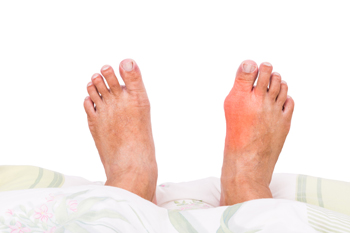 Bunions are a very common foot condition that cause a bony lump to form at the main joint of the big toe. This occurs when the joint is pulled out of alignment because the big toe is turned towards the rest of the toes. While bunions may not cause pain or symptoms at first, they can eventually push the other toes out of alignment making it difficult to wear shoes or walk. Bunions even have a tendency of causing skin irritation as the shoes rub against the affected area. Bunions can be caused due to inherited defects in the foot structure, wearing poorly fitted shoes, arthritis, conditions that damage the nerves in the feet, and of course injuries. If you are suffering from a painful bunion, consulting with a podiatrist for pain relief methods is highly suggested.
Bunions are a very common foot condition that cause a bony lump to form at the main joint of the big toe. This occurs when the joint is pulled out of alignment because the big toe is turned towards the rest of the toes. While bunions may not cause pain or symptoms at first, they can eventually push the other toes out of alignment making it difficult to wear shoes or walk. Bunions even have a tendency of causing skin irritation as the shoes rub against the affected area. Bunions can be caused due to inherited defects in the foot structure, wearing poorly fitted shoes, arthritis, conditions that damage the nerves in the feet, and of course injuries. If you are suffering from a painful bunion, consulting with a podiatrist for pain relief methods is highly suggested.
If you are suffering from bunions, contact Dr. Michael D. Garvin of Florida. Our doctor can provide the care you need to keep you pain-free and on your feet.
What Is a Bunion?
A bunion is formed of swollen tissue or an enlargement of boney growth, usually located at the base joint of the toe that connects to the foot. The swelling occurs due to the bones in the big toe shifting inward, which impacts the other toes of the foot. This causes the area around the base of the big toe to become inflamed and painful.
Why Do Bunions Form?
Genetics – Susceptibility to bunions are often hereditary
Stress on the feet – Poorly fitted and uncomfortable footwear that places stress on feet, such as heels, can worsen existing bunions
How Are Bunions Diagnosed?
Doctors often perform two tests – blood tests and x-rays – when trying to diagnose bunions, especially in the early stages of development. Blood tests help determine if the foot pain is being caused by something else, such as arthritis, while x-rays provide a clear picture of your bone structure to your doctor.
How Are Bunions Treated?
- Refrain from wearing heels or similar shoes that cause discomfort
- Select wider shoes that can provide more comfort and reduce pain
- Anti-inflammatory and pain management drugs
- Orthotics or foot inserts
- Surgery
If you have any questions, please feel free to contact our offices located in Port St. Lucie, FL . We offer the newest diagnostic and treatment technologies for all your foot care needs.
Read more about What Are Bunions?More...
Tips to Prevent Injuries for New Runners
 Running can be a healthy activity that helps with weight loss and staying in shape. Those who are beginning to run for the first time should make sure to have running shoes that fit properly. If you are worried about a past foot or ankle injury, or you want to prevent one in the future, consult with a podiatrist for help. When starting out, ease into running by slowly increasing your pace and distance. Warming up before each run will help increase blood flow and prevent unnecessary stress and fatigue. Cooling down after a run will help bring your heart rate back to normal. As you increase your running activity, keep an eye on any wear and tear that your shoes may experience, because as the shock absorbers in the shoes weaken, the chances of injury increase. If you have any questions in regards to keeping your feet healthy while running, please consult with a podiatrist.
Running can be a healthy activity that helps with weight loss and staying in shape. Those who are beginning to run for the first time should make sure to have running shoes that fit properly. If you are worried about a past foot or ankle injury, or you want to prevent one in the future, consult with a podiatrist for help. When starting out, ease into running by slowly increasing your pace and distance. Warming up before each run will help increase blood flow and prevent unnecessary stress and fatigue. Cooling down after a run will help bring your heart rate back to normal. As you increase your running activity, keep an eye on any wear and tear that your shoes may experience, because as the shock absorbers in the shoes weaken, the chances of injury increase. If you have any questions in regards to keeping your feet healthy while running, please consult with a podiatrist.
All runners should take extra precaution when trying to avoid injury. If you have any concerns about your feet, contact Dr. Michael D. Garvin of Florida. Our doctor will treat your foot and ankle needs.
How to Prevent Running Injuries
There are a lot of mistakes a runner can make prior to a workout that can induce injury. A lot of athletes tend to overstretch before running, instead of saving those workouts for a post-run routine. Deep lunges and hand-to-toe hamstring pulls should be performed after a workout instead of during a warmup. Another common mistake is jumping into an intense routine before your body is physically prepared for it. You should try to ease your way into long-distance running instead of forcing yourself to rush into it.
More Tips for Preventing Injury
- Incorporate Strength Training into Workouts - This will help improve the body’s overall athleticism
- Improve and Maintain Your Flexibility – Stretching everyday will help improve overall performance
- “Warm Up” Before Running and “Cool Down” Afterward – A warm up of 5-10 minutes helps get rid of lactic acid in the muscles and prevents delayed muscle soreness
- Cross-Training is Crucial
- Wear Proper Running Shoes
- Have a Formal Gait Analysis – Poor biomechanics can easily cause injury
If you have any questions, please feel free to contact our offices located in Port St. Lucie, FL . We offer the newest diagnostic and treatment technologies for all your foot care needs.
Read more about Preventing Running InjuriesWhat Can Cause Gout?
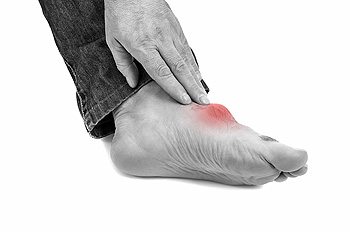 Patients who experience gout attacks are aware of the severe and debilitating pain this condition may cause. It is considered to be a form of arthritis and typically affects the joints in the big toe. Some of the symptoms that are generally associated with gout include swelling on or near the affected joints, and it may often feel warm when touched. Gout is caused by an excess of uric acid in the bloodstream, which is referred to as hyperuricemia. It may occur from genetic reasons, or from eating foods that have high levels of purines. These can consist of red meat, shellfish, and drinks that have an elevated sugar content. Additionally, existing medical conditions such as diabetes, high blood pressure, and poor kidney function, may play significant roles in developing gout. If you are afflicted with this type of arthritis, it is strongly suggested that you are under the care of a podiatrist who can effectively treat this condition.
Patients who experience gout attacks are aware of the severe and debilitating pain this condition may cause. It is considered to be a form of arthritis and typically affects the joints in the big toe. Some of the symptoms that are generally associated with gout include swelling on or near the affected joints, and it may often feel warm when touched. Gout is caused by an excess of uric acid in the bloodstream, which is referred to as hyperuricemia. It may occur from genetic reasons, or from eating foods that have high levels of purines. These can consist of red meat, shellfish, and drinks that have an elevated sugar content. Additionally, existing medical conditions such as diabetes, high blood pressure, and poor kidney function, may play significant roles in developing gout. If you are afflicted with this type of arthritis, it is strongly suggested that you are under the care of a podiatrist who can effectively treat this condition.
Gout is a painful condition that can be treated. If you are seeking treatment, contact Dr. Michael D. Garvin from Florida. Our doctor will treat your foot and ankle needs.
What Is Gout?
Gout is a form of arthritis that is characterized by sudden, severe attacks of pain, redness, and tenderness in the joints. The condition usually affects the joint at the base of the big toe. A gout attack can occur at any random time, such as the middle of the night while you are asleep.
Symptoms
- Intense Joint Pain - Usually around the large joint of your big toe, and it most severe within the first four to twelve hours
- Lingering Discomfort - Joint discomfort may last from a few days to a few weeks
- Inflammation and Redness -Affected joints may become swollen, tender, warm and red
- Limited Range of Motion - May experience a decrease in joint mobility
Risk Factors
- Genetics - If family members have gout, you’re more likely to have it
- Medications - Diuretic medications can raise uric acid levels
- Gender/Age - Gout is more common in men until the age of 60. It is believed that estrogen protects women until that point
- Diet - Eating red meat and shellfish increases your risk
- Alcohol - Having more than two alcoholic drinks per day increases your risk
- Obesity - Obese people are at a higher risk for gout
Prior to visiting your podiatrist to receive treatment for gout, there are a few things you should do beforehand. If you have gout you should write down your symptoms--including when they started and how often you experience them, important medical information you may have, and any questions you may have. Writing down these three things will help your podiatrist in assessing your specific situation so that he or she may provide the best route of treatment for you.
If you have any questions, please feel free to contact our offices located in Port St. Lucie, FL . We offer the newest diagnostic and treatment technologies for all your foot care needs.
Read more about GoutWhat’s Causing My Lateral Foot Pain?
 Pain felt on the outer side of the foot, or lateral foot pain, is often indicative of the condition known as cuboid syndrome. Trauma to the foot, or gradual repetitive force can cause the cuboid bone to shift out of place. Along with lateral foot pain, common symptoms of cuboid syndrome may include tenderness and swelling, difficulty walking, and pain that can worsen over time when weight is placed on the affected foot. Athletes, such as ballet dancers and runners, have been known to be affected by cuboid syndrome as their particular physical activities can put strain on the cuboid bone. For a proper diagnosis, please seek the care of a podiatrist.
Pain felt on the outer side of the foot, or lateral foot pain, is often indicative of the condition known as cuboid syndrome. Trauma to the foot, or gradual repetitive force can cause the cuboid bone to shift out of place. Along with lateral foot pain, common symptoms of cuboid syndrome may include tenderness and swelling, difficulty walking, and pain that can worsen over time when weight is placed on the affected foot. Athletes, such as ballet dancers and runners, have been known to be affected by cuboid syndrome as their particular physical activities can put strain on the cuboid bone. For a proper diagnosis, please seek the care of a podiatrist.
Cuboid syndrome, also known as cuboid subluxation, occurs when the joints and ligaments near the cuboid bone in the foot become torn. If you have cuboid syndrome, consult with Dr. Michael D. Garvin from Florida. Our doctor will assess your condition and provide you with quality foot and ankle treatment.
Cuboid syndrome is a common cause of lateral foot pain, which is pain on the outside of the foot. The condition may happen suddenly due to an ankle sprain, or it may develop slowly overtime from repetitive tension through the bone and surrounding structures.
Causes
The most common causes of cuboid syndrome include:
- Injury – The most common cause of this ailment is an ankle sprain.
- Repetitive Strain – Tension placed through the peroneus longus muscle from repetitive activities such as jumping and running may cause excessive traction on the bone causing it to sublux.
- Altered Foot Biomechanics – Most people suffering from cuboid subluxation have flat feet.
Symptoms
A common symptom of cuboid syndrome is pain along the outside of the foot which can be felt in the ankle and toes. This pain may create walking difficulties and may cause those with the condition to walk with a limp.
Diagnosis
Diagnosis of cuboid syndrome is often difficult, and it is often misdiagnosed. X-rays, MRIs and CT scans often fail to properly show the cuboid subluxation. Although there isn’t a specific test used to diagnose cuboid syndrome, your podiatrist will usually check if pain is felt while pressing firmly on the cuboid bone of your foot.
Treatment
Just as the range of causes varies widely, so do treatments. Some more common treatments are ice therapy, rest, exercise, taping, and orthotics.
If you have any questions, please feel free to contact our offices located in Port St. Lucie, FL . We offer the newest diagnostic and treatment technologies for all your foot care needs.
Read more about All About Cuboid Syndrome
